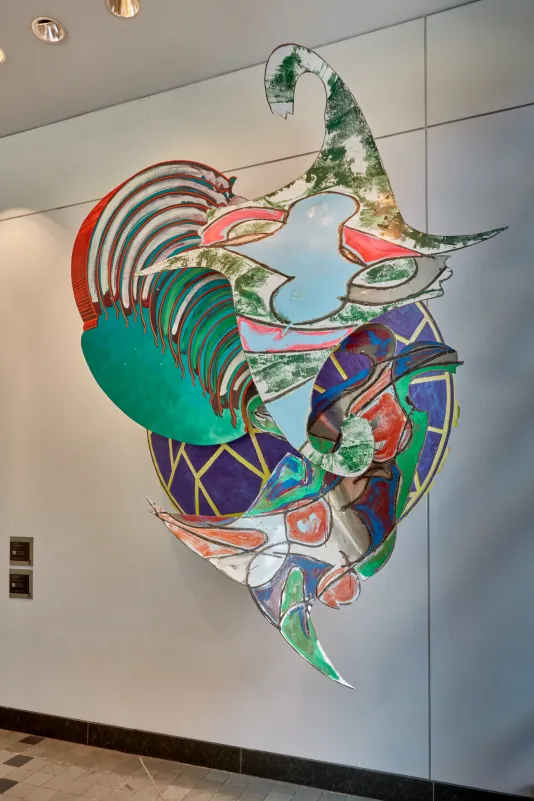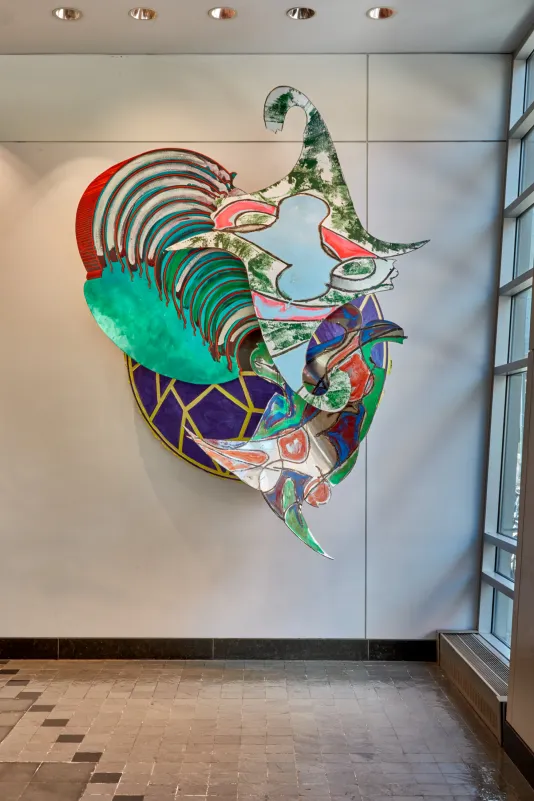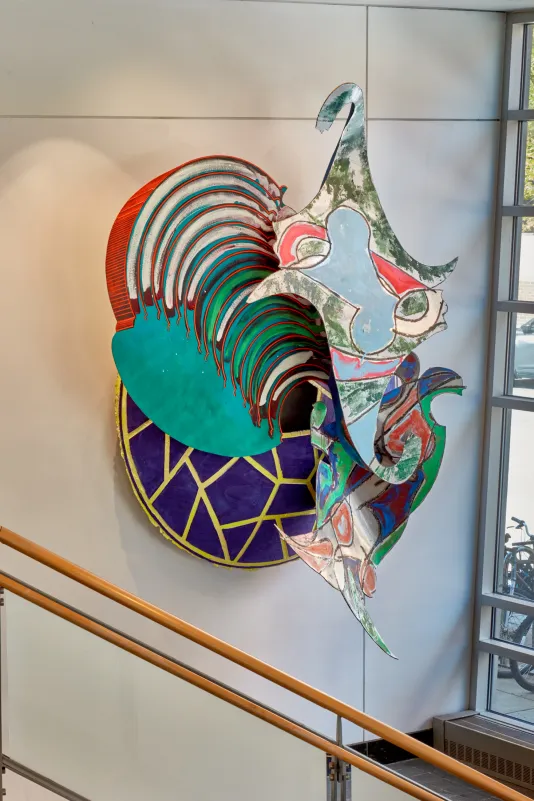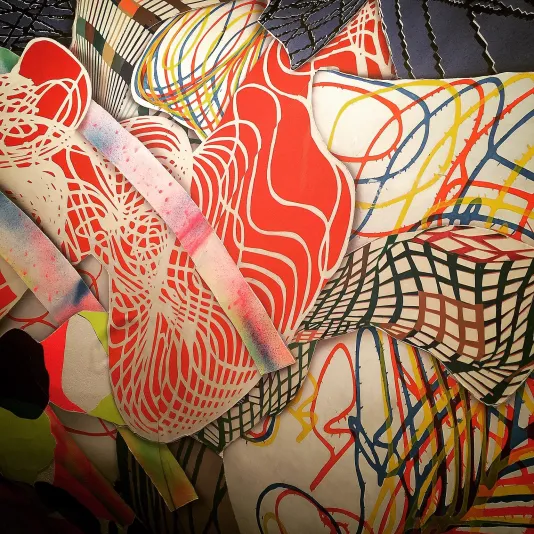Frank Stella, Heads or Tails, 1988. © 2025 Frank Stella / Artists Rights Society (ARS), New York. Photo: Charles Mayer Photography
Heads or Tails, 1988

In the 1970s, Frank Stella’s style underwent a dramatic change, as the carefully constructed geometric designs he had painted in flat planes of color were replaced by a looser style.
His shaped canvases took on less regular forms, and he introduced elements of collage with pieces of canvas pasted onto plywood. His work also became more three-dimensional in large, freestanding metal pieces that merged sculpture and painting. One ensuing series, comprising 138 works Stella produced between 1986 and 1997, is a response to Herman Melville’s classic 1851 novel Moby-Dick. Each piece corresponds to a chapter in the novel. A combination of aluminum shapes with acrylic and enamel designs, Heads or Tails is titled after the ninetieth chapter, in which Melville describes an English law stipulating that, of any whale caught along the coastline, the head must be given to the king and the tail to the queen—“much like halving an apple,” Melville writes, as this will leave “no intermediate remainder.”
Stella’s composition, while abstract, seems to visualize several aspects of this story in multiple slices of aluminum: a series of red, nested curves at upper left suggests the bloody bones of a rib cage; the curves and shimmering material of the aluminum itself are suggestive of waves; and the shape of the uppermost form evokes a whale’s tail, while the rear form might evoke either a head or a globe. Still, the work exceeds its premise. While Heads or Tails was inspired by Melville, the title equally suggests a coin toss, introducing an element of chance. Stella has colored within the lines but also exceeded them altogether, making jagged cuts into the forms and enlivening an otherwise earthen palette with neon pink, bright red, and baby blue. An experiment in abstraction, the sculpture becomes its own story of colliding parts and layered mediums.
Frank Stella (b. 1936) was born in Malden, Massachusetts, as the eldest son of Italian-American immigrants. He graduated from Princeton University, New Jersey, in 1958 with a BA in history. Although the university did not offer a degree in studio art, Stella found guidance there from painter Stephen Greene and art historian William Seitz. After moving to New York in the late 1950s, Stella rented a former jeweler’s shop and found employment as a house painter. Influenced by the paintings of postwar Abstract Expressionists such as Barnett Newman, Willem de Kooning, and Franz Kline, he began using ordinary house paint on canvas to create symmetrical black shapes delineated by pinstripes. These paintings, known as the “Black Paintings,” were shown in Stella’s first important group show, “Sixteen Americans” at the Museum of Modern Art, and are often credited with paving the way for the Minimalist art movement of the 1960s. Stella’s next body of paintings in aluminum and copper paint involved shaped canvases, often in alphabetic forms. These later developed into more elaborate designs with a wider range of colors.
Stella has produced a number of public artworks and architectural commissions. His work is in the collections of most major art institutions across the globe, including the Museum of Fine Arts, Boston; Art Institute of Chicago; Whitney Museum of American Art, New York; Museum of Modern Art, New York; Hirshhorn Museum and Sculpture Garden, Washington D.C.; San Francisco Museum of Modern Art; Kunstmuseum Basel; Peggy Guggenheim Collection, Venice; and Tate, London. He was awarded the National Medal of Arts in 2009. Stella lives and works in New York City.


